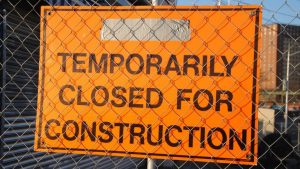The growing popularity of green or living roofs is underscoring the need to have an adequate test system in place to detect leaks that may occur in the protective roof membrane during or after construction.
VANCOUVER
The growing popularity of green or living roofs is underscoring the need to have an adequate test system in place to detect leaks that may occur in the protective roof membrane during or after construction.
This was the message for delegates attending the International Conference on Building Envelope Systems and Technologies (ICBEST 2010) July 27-30 in Vancouver.
“You, as professionals, should know how many leaking roofs there are in the industry,” said Klaus Burger, a German based researcher of leak detection and protection systems and member of the German Green Roof Association.
He said that leaks – even pinhole sized ones – could take years to work their way through the building and cause substantial damage before being realized.
David Vokey, an electrical engineer with Detec Systems, which offers detection and monitoring services, also spoke about membrane leak systems.
He said that for green roofs, these systems are becoming the assurance that insurance companies wanted to gain peace of mind.
Leaks can occur during installation from trades, from using the roof as a storage area, from materials being blown by the wind or transported by water during rainstorms, workmanship defects and also extreme weather and age.
There are two main types of systems used today: those used to check the membrane that will go beneath a green roof and ensure the membrane is intact before soil and plants are placed on it and secondly, those that remain in place under the membrane to continually monitor any leakage
Burger pointed to a study done in 2009 in Switzerland on 371 flat roofs built between 1931 and 1993.
The average roof life was 18.4 years with some failing as early as three years later.
“It has to be water tight from Day 1,” he said, adding that when leaks occur, building owners need to detect the leak area quickly to prevent damage.
It is quite costly to remove the whole planted area to search for a leak. The conventional way of testing whether a membrane works properly was the use of “flood” test during the construction phase, said Vokey. He added that the process of flooding the roof “wasn’t much fun”.
There was also debate about how long the water should be allowed to stand on the roof membrane.
This caused the industry to look at alternate systems.
Burger divided the systems on the market into three major groups: electric field vector mapping (EFVM), smoke and tracer gas and monitoring systems.
The EFVM systems, essentially involves rolling a carpet sweeper like instrument over the membrane. It emits an electric current over a slightly-wet, newly- installed membrane, which is non-conductive.
If there is a leak, the electric current will follow attempting to find ground.
The monitor will indicate the leak before the roof is sealed or a green roof planted.
EFVM systems, while highly sensitive to finding even smaller pinhole leaks, he said, do not work in all applications.
Burger gave the example of soccer practice on the top of a European grocery store in 2006.
By 2009, leaks were occurring but EFVM testing failed to find the source.
Gas and smoke testing was used and injected under the membrane.
“You know where the leak was?” he asked as he showed a slide of smoke rising out of the tops of the poles used to hold a net in place.
The protector caps had been left off the poles and rain had run down the pole interiors into the insulation, which dripped into the store.
The monitoring systems essentially use a cable system that is placed in a grid pattern and left under the waterproof membrane with the cable going to a contact box.
When any moisture, however slight, hits the cable, the current is broken.
Other similar grid systems allow information to be gathered and sent to a computer processor, which will indicate where the leak is located.
In these monitoring systems, the grid square can be excavated and the membrane swept for the hole and fixed.
Detec’s Vokey said the ability of these monitoring systems to be portable (to check walls in reservoirs as well as flat areas with membranes) or stay in place and provide an early warning of a membrane breach is part of the evolving building technology today.
“The technology we are seeing in the building envelope walls is really just being brought to the roof,” he said.










Recent Comments
comments for this post are closed